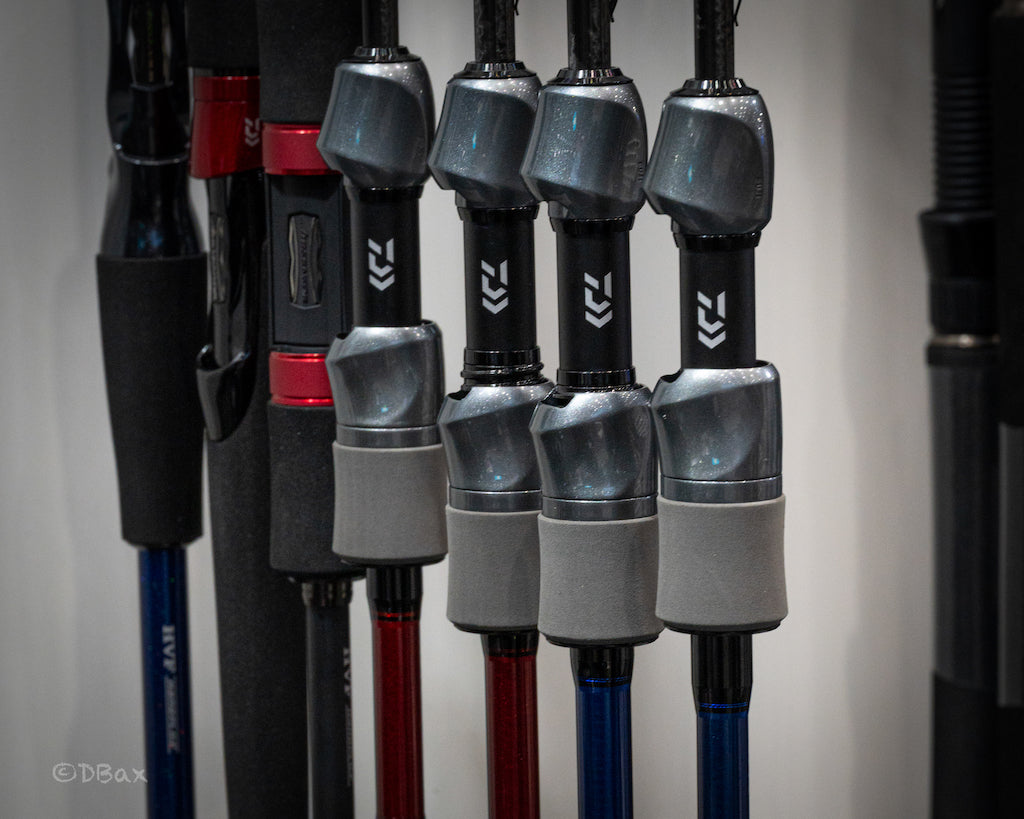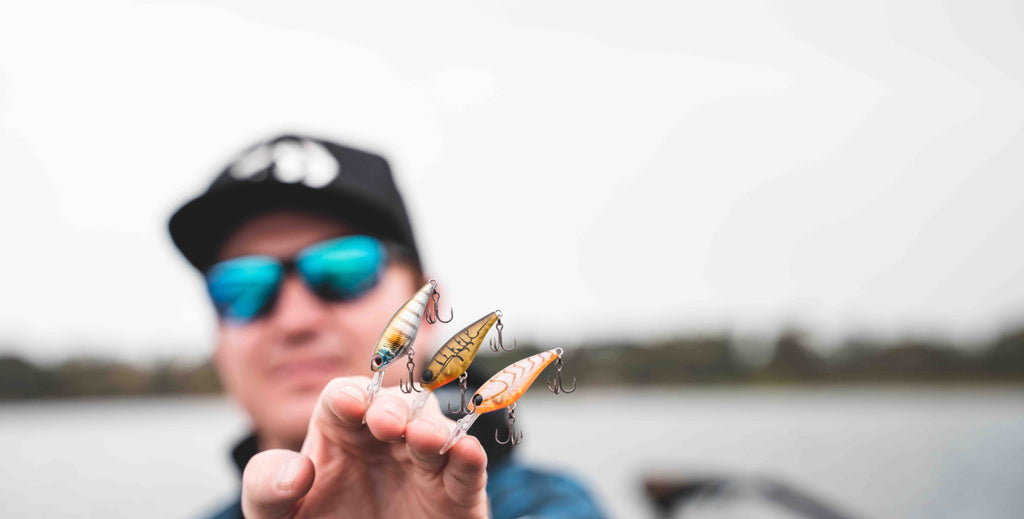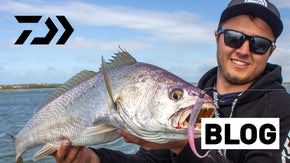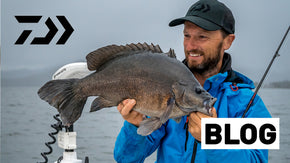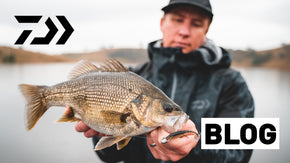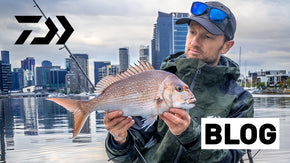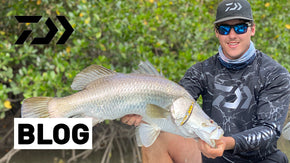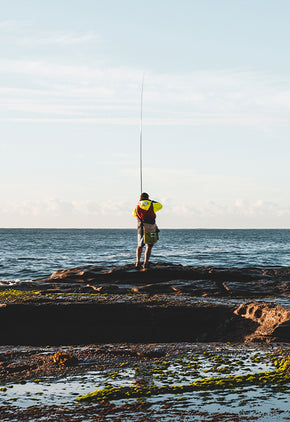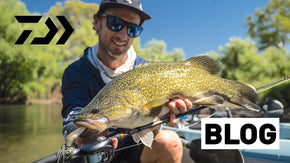Posted 19th April 2023
Estuary Fishing: A Complete Guide


By Robert Thornton
Aussies are blessed with a huge range of environments and arenas for their fishing, which includes some of the most spectacular landscapes in the world. Probably the most accessible for the average angler, though, is the estuary.
There are estuaries scattered all around our continent and adjacent islands, with all of them holding healthy populations of catchable fish. These ever-changing biomes vary a lot in size, character and the species they harbour, but they all have a few things in common.
In this blog, we’ll take a deep dive into the estuarine world. We’ll look at what an estuary is, estuary species, estuary tackle, different types of estuary fishing and techniques, along with a few extra tips and tricks as well.
What is an Estuary?
An estuary is a sheltered, tidal, brackish body water open to the ocean, which receives freshwater run-off. This generally refers to rivers and creeks, however they can also include inlets, sounds, lagoons, bays and natural harbours if they meet the above criteria.
The mixing of seawater and freshwater results in a high concentration of nutrients in the water and the sediment, making estuaries incredibly productive natural habitats for a range of aquatic and terrestrial life.
Because a lot of cities and towns are built around rivers, creeks and harbours, many estuaries are also very accessible for people, and despite heavy human development around some of these waterways, fish numbers have remained healthy for the most part. In fact, fish have adapted so well in some areas that they are known to use man-made structures as habitat.
All these factors combine to make estuary fishing very popular in this country, and the subject of a lot of environmental conservation efforts. Given that the estuary is the zone that connects the inland freshwater to the sea, sustainable human practises around it are crucial to the health of virtually all marine life. So many animals, including humans, rely on healthy estuaries for a number of things, and to lose just one would cause ecological collapse in the immediate area.
 Estuary Species
Estuary Species
The fish species found in estuaries varies a lot depending on where you are in the country, and here we’re going to list a few of the more popular angling targets.
Estuaries in the tropical north are usually a mixture of sand, mud and dense mangrove forests. Large tidal movement is also a feature of many northern estuaries. Species such as barramundi, mangrove jack, pikey bream, yellowfin whiting, trevally, queenfish, estuary cod and many, many more are regular targets for anglers in these regions.
In the middle, sub-tropical latitudes, anglers will tend to encounter yellowfin bream, yellowfin whiting and various flathead species as their dominant estuary targets, however at different times of the year will experience ‘runs’ of tropical or temperate species. Northern fish such as barra and jacks as well as southern species like Australian salmon and tailor can be found in sub-tropical estuaries at times.
In the temperate estuaries further south, species like black bream, estuary perch, mulloway, Aussie salmon and tailor are the mainstays of estuary angling. Southern estuaries will often close to the ocean periodically, usually opening either after heavy rainfall in the upper system or with human intervention.
 Estuary Fishing
Estuary Fishing
The diversity of species means there are so many productive techniques, so we’ll look at the most effective and well-known bait and lure methods, and a few tackle options for each.
Estuary Bait Fishing
Bait fishing in the estuary is how so many Australians start their fishing journey, and with everything from 10cm bream to 40kg mulloway a possibility, some never stray from this highly productive technique. It can be done at any stage of the tide in virtually any conditions. There’re infinite ways to bait fish in the estuary, but let’s look at a few of the more popular rigs.
A simple running sinker rig consisting of a sinker, swivel, 30-40cm trace and hook is all you need for bread-and-butter species like bream, whiting, flathead, small trevally and more anywhere in the country. This style of rig allows your bait to sit near the bottom, gently wafting a foot or so off it to attract attention from nearby fish. Baits such as yabbies, prawn tails, pilchard pieces, squid pieces and worms (sand, blood or beachworms) are proven baits for the estuary. Hooks between size 4 and 1/0 are fine, with bloodworm, baitholder and circle style hooks your best bet. You want your sinker (ball, bean or surf styles are preferred) to be just heavy enough to keep your bait on the bottom without it drifting off with the current. A size 1 ball sinker is usually a good starting point.
A light spin outfit like the 22 Laguna XT 2500/702LFS pre-mounted combo is ideal for estuary bait fishing, with a tough 2500 size Laguna reel and highly sensitive Laguna 702LFS composite rod to detect bites. On this combo, 6, 8 or 10lb J-Thread Nylon is ideal as a mainline.
Chasing larger estuary predators on bait is an option too, and there’s a few ways to do it. Live baits or larger dead baits are commonly called upon for species like barramundi, estuary cod and mangrove jacks up north, and mulloway, big flathead, tailor and snapper in the south.
Scaling up your running sinker rig with 15-20lb trace, a size 1/0-5/0 hook (suicide, circle, octopus) is a simple yet effective way to set yourself up for the bigger stuff. Multi-hook rigs, either snelled or ganged together, are sometimes utilised for larger baits. Adding a fixed Styrofoam float above your trace (about 1m) is an option if you’re drifting baits into snaggy areas where you want to keep you bait away from sunken snags.
Another method is to fish live or dead baits unweighted, with just a hook tied onto your trace. Unweighed baits are excellent for making your bait appear more natural, and are highly effective over sandflats for big flathead, tailor, and anything else cruising around in a relatively snag-free area.
Popular dead baits include whole mullet, pilchard, squid, garfish, whiting, as well as strips or fillets of any of these. Estuary live baits can be any of the above fish, along with live shrimp and prawn, however unless your local bait store sells live bait you will have to collect them yourself.
The 22 Laguna XT 2500/662MLFS or 4000/662MFS pre-mounted combos are more suited to bait fishing for larger estuary species, with 15, 20 or 25lb J-Thread Nylon a good option for mainline.
 Estuary Lure Fishing
Estuary Lure Fishing
Lure fishing in estuaries is a passion for many anglers, and the number of species and different ways you can catch them means there’s always something else to learn.
One thing to remember, though, is that with most lure fishing the angler has to find the fish, not the other way around as with bait fishing. One plus of lure fishing is that anglers can get their presentations into nooks and crannies that bait anglers can’t.
The key to finding the fish in the estuary is to understand the tide. Estuary fish live in harmony with the tide, always using it to their advantage to find food.
All species have their own unique tidal habits, with some only feeding at certain stages of the tide, but there’s a few general rules you can apply to most estuaries.
Higher stages of the tide tend to see fish spreading over sand flats, weed beds and rubble patches or venturing into mangrove forests and other areas that are high and dry at low tide. Lower stages of the tide see these same predators and foragers retreating into channels. While the tide is going out, predators will often wait on the edge of channels or the mouth of drainages for smaller fish and crustaceans to be swept right to them.
Bread-and-butter species Australia-wide like bream, whiting and flathead generally follow these rules, and are very susceptible to small lures. At high tide, small diving hardbodies like the Infeet Rollin’ Crank MR and Double Clutch 48SP, and topwater lures like the Infeet Slippery Dog 65F and Steez Popper 50F are excellent for working over shallow flats, even if they’re only a few inches deep!
As the tide starts draining off these areas, soft plastics like the Bait Junkie 2.5inch Grub and 2.5inch Minnow, and blade baits like the Steez Metal Vibe can be worked along the edges of the channels and into them when the tide bottoms out.
Up north where there are larger tides and more aggressive species like mangrove jacks, barramundi, grunter, threadfin salmon and more, fish will often move into mangrove areas at high tide. This is where plastics like the Bait Junkie 4.2inch Minnow rigged weedless and Bait Junkie Kikker Curly can be thrown right up in amongst the thickest cover to tempt fish out.
As the tide goes out, the edges of the mangroves, the mouths of drains and snaggy channels become the key target areas, with hardbodies like the Steez Current Master 93SP-DR and Double Clutch 115SP and plastics like the Steez Soft Shell 90 perfect for these deeper hanging fish.
A good-quality graphite rod paired with a spin or baitcast reel spooled with braided line like J-Braid 8 Grand will help to accurately cast lures, work them effectively, and also feel everything that’s happening to the lure. A rod length or so of fluorocarbon leader such as J-Thread FC or J-Thread Finesse FC will give you a tiny bit of shock absorbance, and ensure your trace is virtually invisible to fish. Lures can be fished on fibreglass rods with monofilament line, however feeling bites and working lures is significantly harder with the extra stretch in the system.
 Down by the River
Down by the River
Estuaries are an incredible resource that most Aussie have ready access to. These little oases are a melting pot of species and techniques, where anglers of all ages and skill levels can enjoy some truly great fishing.
If you want to discover the estuary, chances are there’s one near you! Get to know it and start fishing it – you may be pleasantly surprised with what you find!


 Contact Us
Contact Us Blog
Blog About
About
